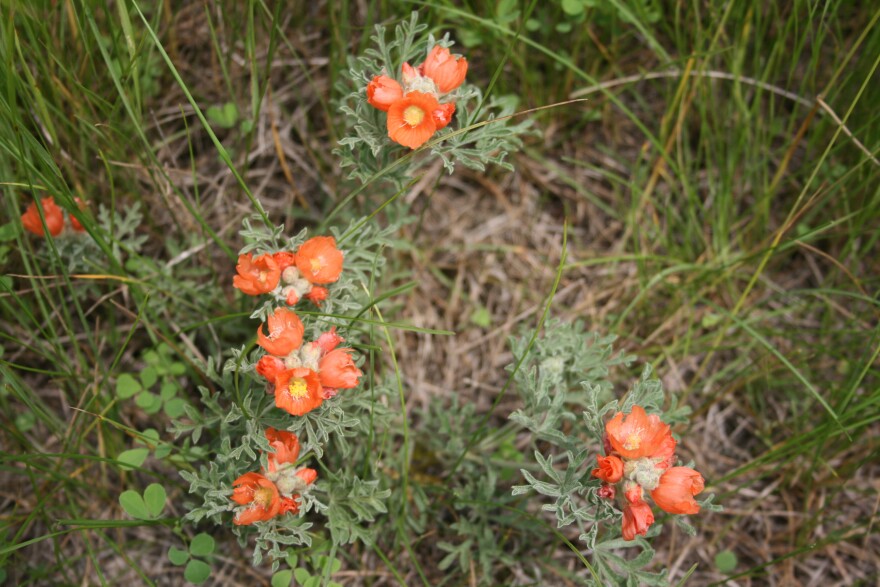One of my favorite wildflowers on the prairie is scarlet globemallow (Sphaeralcea coccinea). It is also known as red false mallow and another common name, but more on that later. Its flowering period in North Dakota runs roughly from June through the first half of July.
Scarlet globemallow is a member of the mallow family which includes cotton, okra, and hollyhocks. It can be found across the state in a variety of habitats such as upland prairie, road ditches, on loamy or more coarse textured soils. It is also commonly observed on disturbed sites such as old badge, coyote, or fox dens, gopher mounds, and prairie dog towns.
Scarlet globemallow is a low growing perennial with an upright or perhaps spreading habit. It grows to a height of four inches, more or less, with many small 3-5 lobed, hairy, and often folded leaves about 1-2 inches long. But like many of our wildflowers, it is the flowers that catch the eyes of the observer. Scarlet globemallow produces terminal clusters of few to many five petaled, saucer-shaped orange flowers, about an inch in diameter. The center of the flower appears yellow due to the many stamens.
Scarlet globemallow was a new species to science when Merriweather Lewis collected the plant “near the plains of the Missouri” on July 20, 1806. The collection was probably made near the forks of the Marias River near present day Glacier National Park. The botanist Thomas Nuttall subsequently described this new species as Cristaria coccinea. It has subsequently placed in the genus Sphaeralcea. But that specimen, along with some others from the Lewis and Clark Expedition are still preserved in the Academy of Natural Sciences in Philadelphia.
But back to those orange flowers. They really are a delight for the eye! That is evidenced by one of the other common names “cowboy’s delight.” I have checked on how this plant could have delighted a cowboy. I found no reference to them smoking it or drinking it. I am not aware of any psychoactive substances in the plant. I cannot find an explanation. But it has the reputation of, well, delighting the cowboys. Maybe the cowboys just had a soft spot for this little wildflower!
~Chuck Lura


